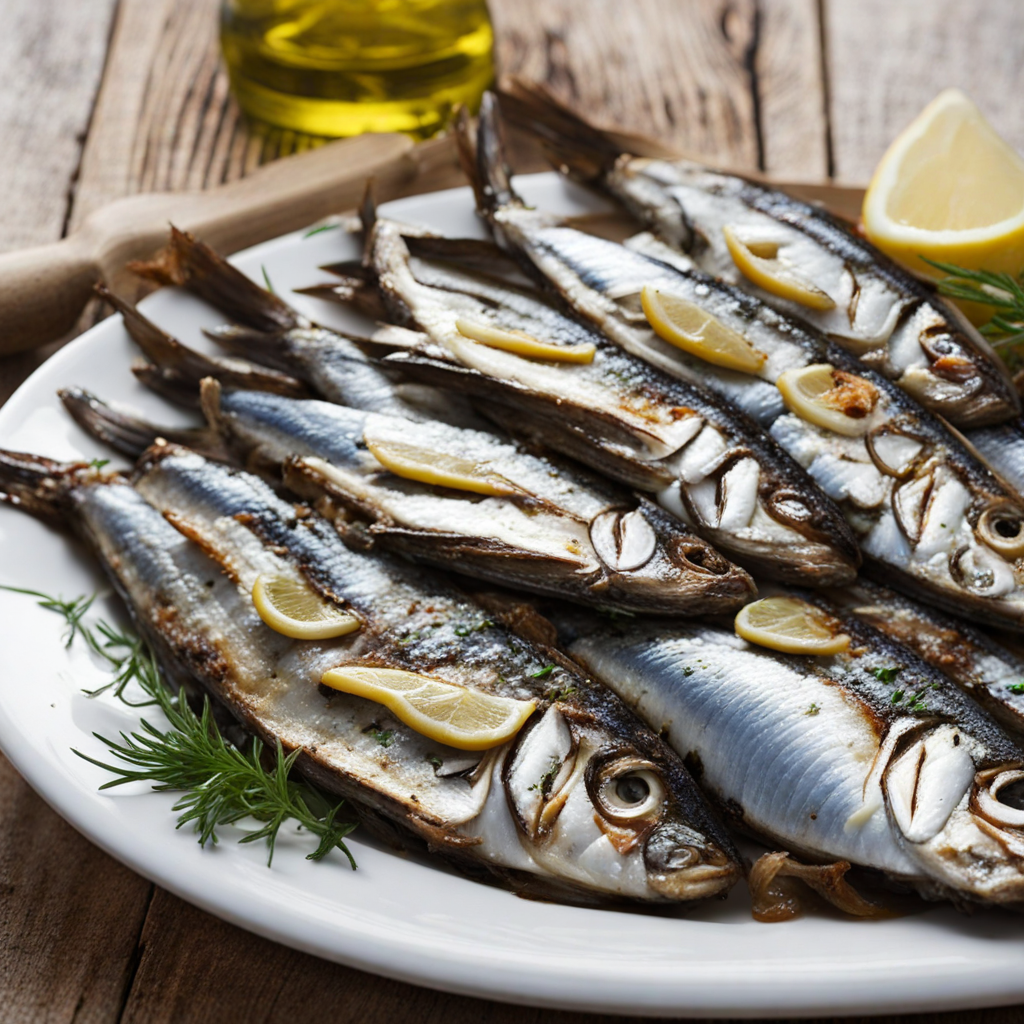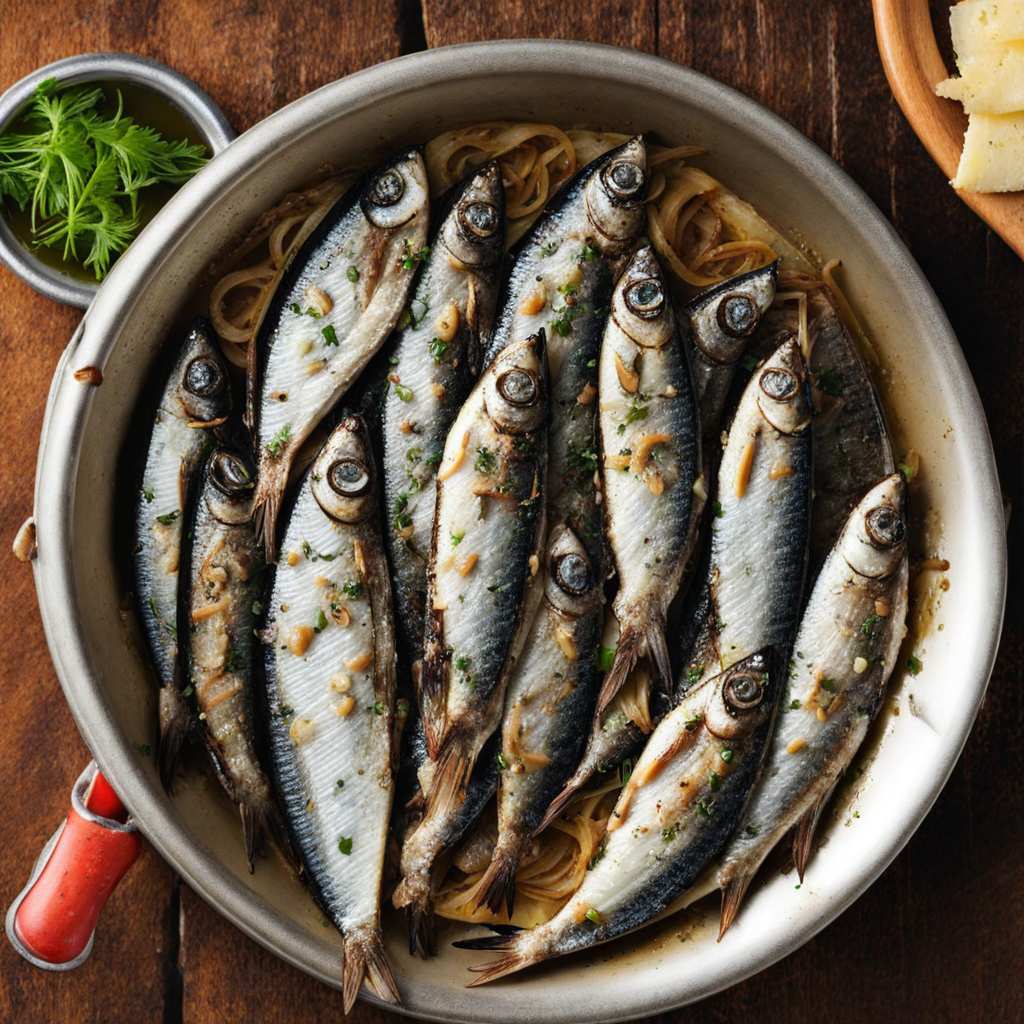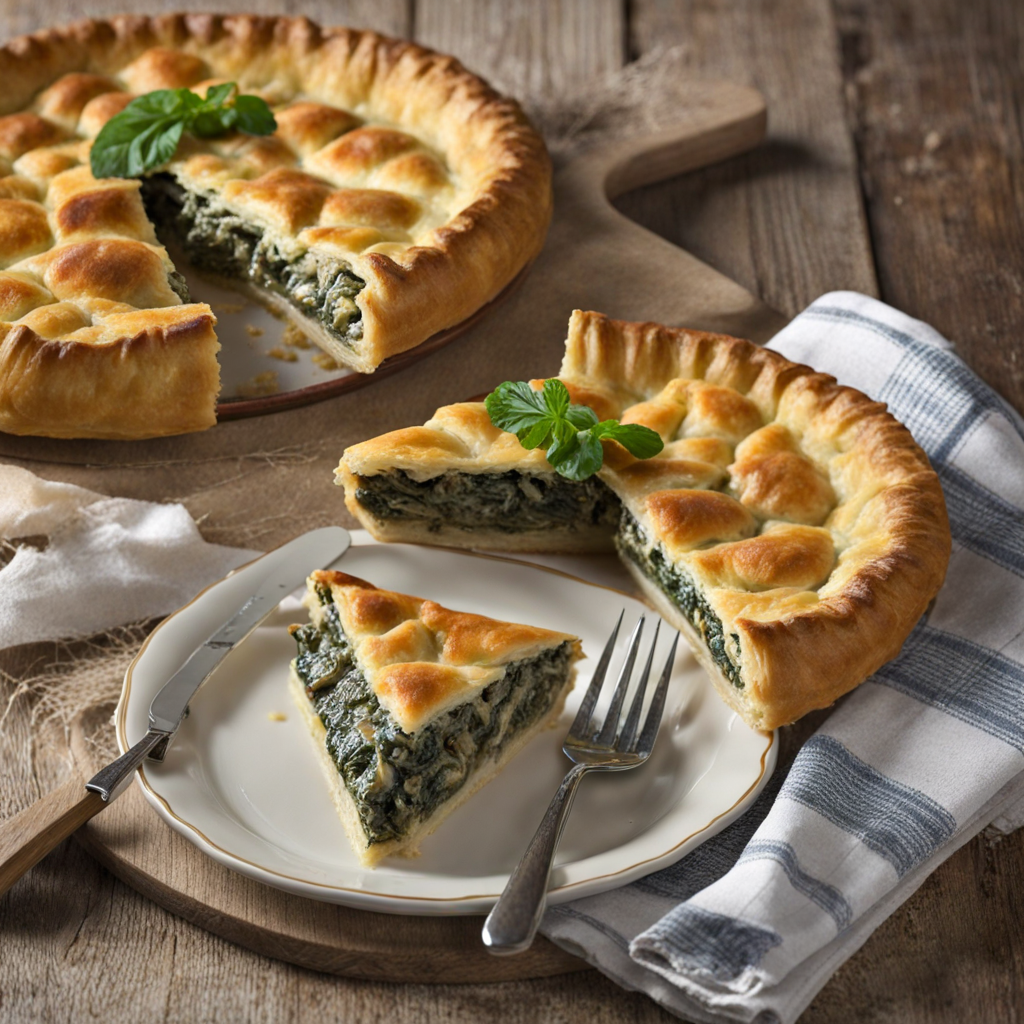Grilled Sardines
Grilled sardines are a beloved dish in Croatia, particularly along the picturesque Adriatic coast. These small fish, known for their rich, oily flesh, are typically marinated with a simple blend of olive oil, garlic, and fresh herbs, allowing their natural flavors to shine. The grilling process imparts a smoky char that enhances the sardines' inherent sweetness, creating a delightful contrast with the slightly crispy skin. Served hot off the grill, they are often accompanied by a squeeze of fresh lemon, which brightens the dish and balances the richness of the fish. In Croatian cuisine, grilled sardines are often enjoyed as a street food delicacy or a casual seaside meal. They are typically served with a side of crusty bread, which is perfect for soaking up the flavorful juices. Some variations may include a sprinkle of sea salt or a drizzle of balsamic vinegar, adding an extra layer of complexity to the dish. The experience of eating grilled sardines is not just about the taste; it’s about the vibrant atmosphere of coastal dining, where the sound of waves and the scent of the sea enhance the meal. Beyond their delectable taste, grilled sardines are also celebrated for their health benefits. Rich in omega-3 fatty acids, they contribute to heart health while being a great source of protein. The dish embodies the essence of Croatian culinary traditions, focusing on fresh, local ingredients and simple preparation methods that allow the flavors of the Mediterranean to take center stage. Enjoying grilled sardines is a culinary journey that captures the spirit of Croatia's coastal culture, inviting food lovers to indulge in a truly authentic experience.
How It Became This Dish
The History of Grillane Srdine: A Croatian Culinary Delight Introduction Grillane srdine, or grilled sardines, are a beloved dish in Croatian coastal cuisine, particularly along the Adriatic Sea. This simple yet flavorful preparation encapsulates the essence of Mediterranean cooking, where fresh ingredients and time-honored techniques come together to create a culinary experience that reflects the region's rich history and culture. To understand grillane srdine, we must delve into its origins, cultural significance, and how it has evolved over time. Origins of Grillane Srdine The history of grillane srdine can be traced back to the ancient Mediterranean civilizations that thrived along the coasts of what is now Croatia. Sardines, known for their abundance in the Adriatic Sea, have been a staple food for centuries. Archaeological evidence shows that fishing practices in this region date back to the Roman Empire, where fish was a key component of the diet. The Romans not only consumed fish but also developed early preservation methods, such as salting and drying, which set the stage for future culinary practices. As the centuries passed, sardines continued to be a vital source of nutrition for coastal communities. The simplicity of grilling them over an open flame became a popular method, allowing the natural flavors of the fish to shine through. The technique resonated with the Mediterranean ethos of valuing fresh, local ingredients, and it became an integral part of the culinary identity of the Croatian coast. Cultural Significance Grillane srdine is not merely a dish; it embodies the cultural heritage and communal spirit of Croatian coastal life. In seaside towns like Dubrovnik, Split, and Zadar, grilling sardines is often a communal event, where families and friends gather around the grill, sharing stories and laughter while the aroma of fish wafts through the air. This practice reinforces the importance of togetherness and the enjoyment of food as a social experience. Moreover, grillane srdine is deeply intertwined with the concept of seasonal eating. Sardines are typically in season during the summer months, and their availability often dictates the rhythm of coastal culinary traditions. Festivals celebrating sardines, such as the annual Sardine Festival in the fishing town of Mali Lošinj, showcase the cultural significance of this fish. These events not only highlight the culinary importance of sardines but also serve to foster community spirit and celebrate local heritage. Preparation Techniques and Variations The preparation of grillane srdine is as much an art as it is a science. Traditionally, sardines are cleaned and gutted, then marinated in a mixture of olive oil, garlic, and herbs such as parsley and rosemary. This process enhances the natural flavors of the fish while adding a fragrant aroma that is characteristic of Mediterranean cuisine. Once marinated, the sardines are grilled over an open flame, often on a charcoal grill or a traditional wood fire. The grilling process is crucial; it imparts a smoky flavor and creates a delightful char that contrasts with the tender, flaky flesh of the fish. The ideal grilling time is short, as sardines cook quickly, and overcooking can lead to dryness. In Croatia, variations of grillane srdine may include different marinades, such as lemon juice or vinegar, and they can be served with various accompaniments. A popular choice is a side of fresh bread, allowing diners to soak up the delicious juices. Additionally, salads made with seasonal vegetables, such as tomatoes and onions, often accompany the dish, adding a refreshing contrast to the richness of the grilled fish. Evolution Over Time As Croatian cuisine has evolved over the years, so too has the preparation and presentation of grillane srdine. While traditional grilling techniques remain popular, modern culinary trends have introduced innovative approaches to this classic dish. Chefs in contemporary restaurants may experiment with flavors, pairing grilled sardines with exotic spices or serving them on a bed of innovative salads, reflecting the fusion of traditional and modern culinary practices. Furthermore, the rise of the farm-to-table movement and a growing emphasis on sustainability have influenced the way grillane srdine is prepared and consumed. Many chefs and home cooks are now sourcing their sardines from local fishermen, ensuring freshness and supporting the local economy. This commitment to sustainability also aligns with the traditional practices of fishing communities that have relied on the Adriatic Sea for generations. Global Influence and Popularity While grillane srdine is a quintessential Croatian dish, its popularity has transcended borders. The Mediterranean diet, which emphasizes fish consumption, healthy fats, and fresh produce, has gained recognition worldwide as a model for healthy eating. As a result, dishes like grillane srdine have found their way onto menus in restaurants across the globe, especially in regions that embrace Mediterranean cuisine. Travelers visiting Croatia are often enchanted by the experience of grilling sardines by the seaside, and this sensory memory enhances the dish's global appeal. The combination of fresh fish, local produce, and the stunning backdrop of the Adriatic coastline creates a unique dining experience that resonates with tourists and locals alike. Conclusion Grillane srdine is more than just a dish; it is a reflection of Croatia's rich culinary heritage, cultural traditions, and the bond between food and community. From its ancient origins to its modern interpretations, grilled sardines have remained a beloved staple along the Croatian coast. Whether enjoyed at a bustling seaside restaurant or grilled on a family terrace, grillane srdine continues to evoke a sense of place, nostalgia, and celebration of life, making it an enduring symbol of Croatian cuisine. As the world becomes increasingly interconnected, this simple yet profound dish serves as a reminder of the importance of local flavors, sustainable practices, and the joy of sharing food with others.
You may like
Discover local flavors from Croatia







